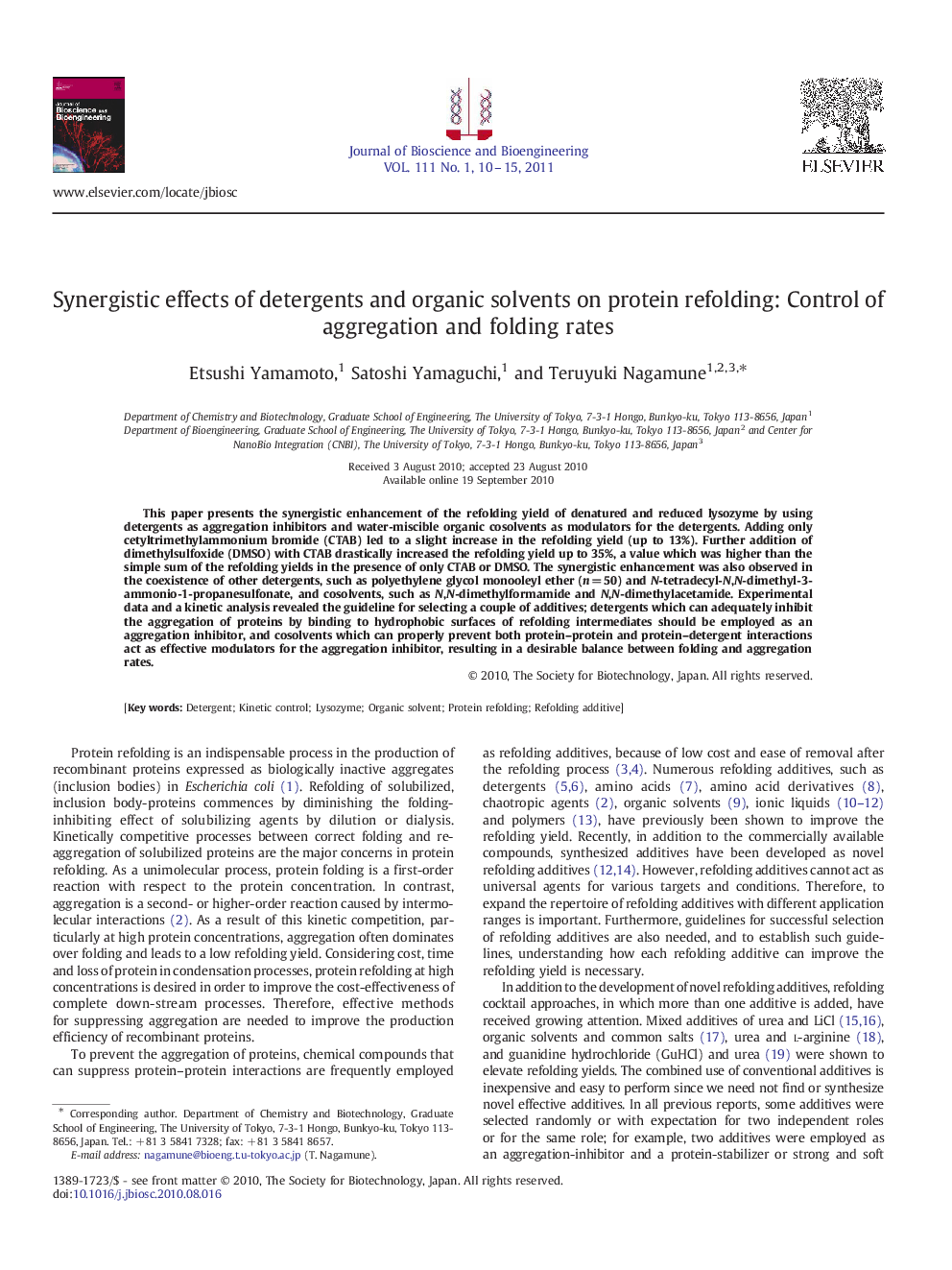| Article ID | Journal | Published Year | Pages | File Type |
|---|---|---|---|---|
| 21113 | Journal of Bioscience and Bioengineering | 2011 | 6 Pages |
This paper presents the synergistic enhancement of the refolding yield of denatured and reduced lysozyme by using detergents as aggregation inhibitors and water-miscible organic cosolvents as modulators for the detergents. Adding only cetyltrimethylammonium bromide (CTAB) led to a slight increase in the refolding yield (up to 13%). Further addition of dimethylsulfoxide (DMSO) with CTAB drastically increased the refolding yield up to 35%, a value which was higher than the simple sum of the refolding yields in the presence of only CTAB or DMSO. The synergistic enhancement was also observed in the coexistence of other detergents, such as polyethylene glycol monooleyl ether (n = 50) and N-tetradecyl-N,N-dimethyl-3-ammonio-1-propanesulfonate, and cosolvents, such as N,N-dimethylformamide and N,N-dimethylacetamide. Experimental data and a kinetic analysis revealed the guideline for selecting a couple of additives; detergents which can adequately inhibit the aggregation of proteins by binding to hydrophobic surfaces of refolding intermediates should be employed as an aggregation inhibitor, and cosolvents which can properly prevent both protein–protein and protein–detergent interactions act as effective modulators for the aggregation inhibitor, resulting in a desirable balance between folding and aggregation rates.
